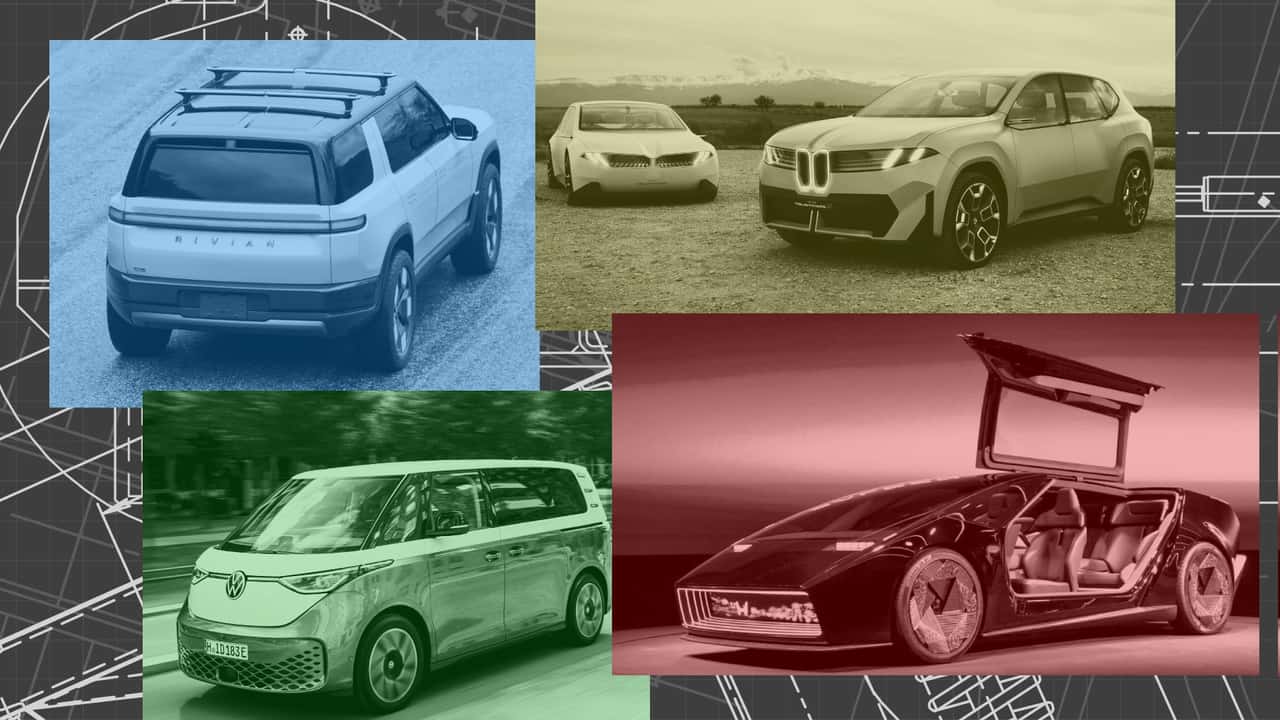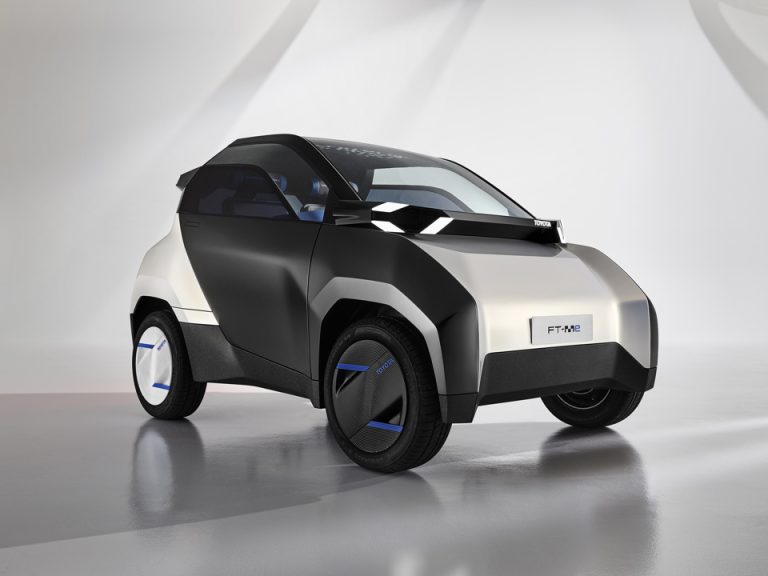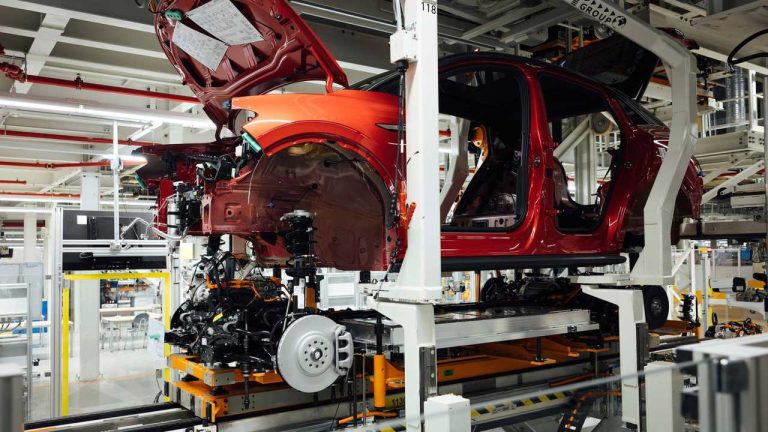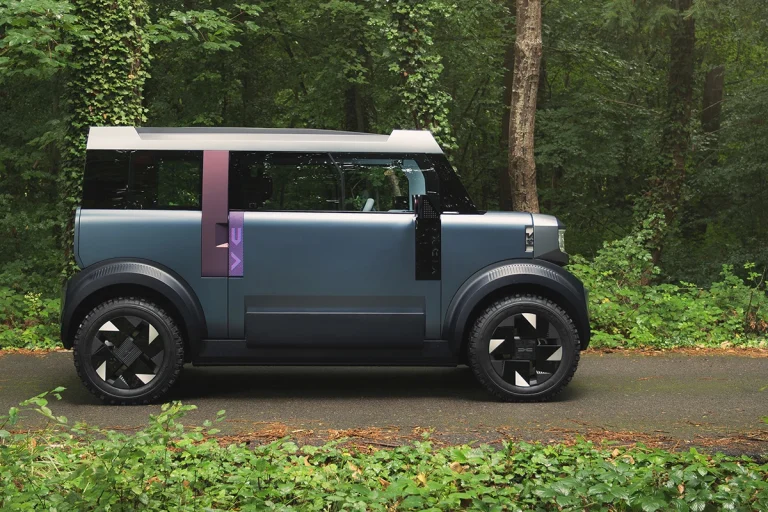Hyundai GM Volvo and SBTi Leading the Electric Vehicle Revolution This Week

Rethinking the Future of Electric Vehicles: A Closer Look at Sustainability, Collaboration, and AI Innovations
The automotive world is in the midst of a revolutionary shift. Major players like Hyundai, GM, and Volvo are teaming up, not only to expand their market footprints but also to address the tricky parts of sustainable manufacturing. In our opinion, the new generation of electric vehicles (EVs) is not just about cleaner energy—it’s about rethinking production methods, embracing advanced technologies like artificial intelligence, and tackling the tangled issues of market diversity. This editorial takes a closer look at the latest developments that are setting the stage for the future of EV design and manufacturing, including influential moves by SBTi and innovative data cloud solutions from technology companies like Snowflake.
In the following sections, we divide our discussion into several subtopics, each enriched with critical insights and detailed analysis. We will dive into the collaborative efforts among automotive giants, examine specific new vehicle models, and explore the emerging role of sustainability standards and AI-driven manufacturing solutions. Meanwhile, we also factor in the opinions and predictions of industry experts to understand how these trends are transforming the global automotive landscape.
Shared Ambitions in EV Manufacturing: Collaborations and Strategic Partnerships
Hyundai Motor Company and General Motors (GM) are teaming up to make a significant impact on the EV market through a strategic collaboration that involves the co-development of five distinct models, including an electric commercial van. This partnership is emblematic of the broader trend toward integrated global supply chains and enhanced production methods that reflect a strong commitment to sustainability.
Expanding Market Boundaries with Co-Developed Models
The co-developed lineup is designed to address a range of market dynamics. Four of the five models are tailored specifically for the Central and South American markets, blending vehicles like a compact SUV, a traditional car, and both compact and mid-size pick-ups. What makes these vehicles particularly interesting is their dual option for propulsion—either internal combustion or hybrid systems—giving consumers the flexibility to choose based on local market conditions and existing infrastructure.
- Sustainable Commercial Vehicles: The electric commercial van stands as a beacon of future logistics solutions, combining eco-friendly powertrains with modern design aesthetics.
- Market-Specific Prototypes: Tailored for distinct regions, these models underline the importance of understanding and meeting local consumer expectations and infrastructure limitations.
- Improved Production Techniques: Both companies are optimizing production lines to reduce waste, streamline assembly, and ultimately set an example for sustainable manufacturing practices.
This collaboration doesn’t merely address environmental goals; it also aims to tackle the confusing bits of supply chain management and production efficiency. By working together, Hyundai and GM are well placed to make headway through the twists and turns of a market that is both competitive and rapidly evolving.
Sustainable Electric SUV Models: A Closer Look at Volvo’s ES90
Volvo Cars is setting new standards in sustainable design with its fully electric ES90 model. Produced using climate-neutral energy, the ES90 is the automotive industry’s answer to a cleaner and more energy-efficient future. The development of the ES90 underscores the importance of managing your way through the many challenges of reducing the overall carbon footprint of vehicles.
Environmental Benefits and Production Milestones
According to Volvo, the ES90 boasts a total carbon footprint of 31 tonnes when powered by a European energy mix. This figure drops even further to 26 tonnes when wind energy is employed, making the ES90 one of the most eco-friendly models ever produced by the brand. The production timeline is also exciting—with production slated to begin in late summer 2025 and the first vehicles reaching customers by spring 2026—demonstrating Volvo’s commitment to accelerating the transition to EVs.
Key takeaways from Volvo’s initiative include:
- Lower Emissions: Volvo emphasizes that the ES90’s emissions are 50% lower than its S90 mild hybrid variant when using a European energy mix, positioning it as a leader in green technology.
- Innovative Energy Sources: By leveraging wind power, the company pushes forward the concept of renewable energy integration across various stages of the production process.
- Practical Rollout Strategies: With a clear production timeline, Volvo is not only setting ambitious sustainability targets but is also ensuring that these goals are met within realistic time frames.
In short, the Volvo ES90 is a clear demonstration that taking a closer look at vehicle design and energy consumption can result in products that meet both environmental and consumer needs, proving that modern EV design is not just a trend but a necessary evolution.
Science-Based Automotive Standards: SBTi’s Net Zero Roadmap
The Science Based Targets initiative (SBTi) plays a super important role in steering the automotive sector towards ambitious net zero targets by 2050. Launched in 2018, the SBTi offers a clear, scientifically validated framework that assists companies in setting and meeting greenhouse gas (GHG) reduction goals in line with the Paris Agreement.
Setting New Criteria for a Changing Industry
The SBTi is revising its net zero standards specifically for the automotive sector—a move that carries weight given that this industry produces around 80 million vehicles annually and contributes to over 10% of the world’s yearly CO₂ emissions. The updated criteria and guidelines will help manufacturers better sort out the complicated pieces of balancing production requirements with environmental responsibilities.
Key benefits of SBTi’s revised standards include:
| Benefit | Description |
|---|---|
| Clear Benchmarks | Provides a step-by-step guide for reducing emissions that companies must follow. |
| Aligned with Global Goals | Helps companies align their initiatives with broader international environmental targets. |
| Enhanced Accountability | Offers a validated framework that holds companies responsible for meeting their reduction targets. |
| Encourages Innovation | Drives technological and design innovations to meet stringent sustainability goals. |
By introducing this refined roadmap, SBTi is not only supporting the automotive sector in cutting down emissions but also ensuring that the transition to electric and hybrid vehicles occurs in a structured and effective manner. This initiative represents a proactive approach to resolving the tricky parts of meeting both market demand and sustainability targets.
Electric Supercars: The High-Performance Side of Electrification
The evolution of electric supercars tells a story of innovation, high performance, and sustainable engineering all at once. As the automotive industry shifts its focus towards electrification, manufacturers are increasingly pushing the limits of what electric propulsion can achieve in the realm of high-performance vehicles.
Pushing the Boundaries of Speed and Sustainability
Electric supercars offer immediate torque, record-setting acceleration, and extreme speeds—all while integrating the latest in battery technology, aerodynamics, and luxury craftsmanship. These vehicles exemplify how even the most intimidating challenges in performance can be met with innovative solutions that do not compromise on sustainability.
Some notable highlights in the electric supercar domain include:
- Instant Acceleration: Electric motors provide power delivery that outpaces traditional engines, offering an exhilarating driving experience.
- Advanced Battery Systems: Cutting-edge battery technology is designed to optimize both performance and longevity while reducing overall weight.
- Luxury and Comfort: Despite their racing pedigree, many electric supercars do not skimp on interior quality, offering drivers a refined and comfortable environment.
- Eco-Friendly Innovations: Manufacturers are combining sleek design with sustainable practices, proving that high performance and environmental responsibility can go hand in hand.
This segment of the EV market shines a light on the fine points of balancing trailblazing speed with the necessary sustainability measures, ensuring that even in the high-octane world of supercars, the future is green.
Snowflake and the AI Data Cloud: Powering the Future of EV Manufacturing
Data is king in the modern world, and the automotive industry is no exception. With companies such as Snowflake stepping into the arena, there is a noticeable shift towards leveraging AI-driven solutions and data clouds to revolutionize EV manufacturing. This tech-driven push is transforming production dynamics by offering deeper and more actionable insights into every facet of manufacturing.
Enhancing Precision and Encouraging Innovation
Snowflake’s announcement to improve AI-driven solutions for the EV manufacturing sector is both timely and transformative. Since April 2023, there has been a significant surge in data applications and collaborative initiatives within the manufacturing ecosystem. This shift is also highlighted by a marked increase in analytical deployments and data science projects, which assist manufacturers in tackling the confusing bits of production accuracy and innovation.
Several key aspects underscore the importance of this evolution:
- Data-Driven Decisions: Integrated analytics empower manufacturers to figure a path through complicated production processes and refine methods quickly.
- Precision Engineering: AI solutions help in monitoring production details, predicting maintenance needs, and enhancing overall operational efficiency.
- Collaborative Growth: The 416% increase in data collaboration initiatives signifies the industry’s push towards open, integrated systems that favor innovation over isolation.
- Scalability and Adaptability: With technology rapidly evolving, automakers are leaning on AI as a critical driver to meet both current and future production demands.
By embracing AI and data cloud technologies, the EV sector is well positioned to not only meet growing market demands but also address the nerve-racking challenges associated with modern production techniques.
Overcoming Tricky Parts in a Rapidly Evolving Market
The journey towards a fully electrified automotive market is filled with twists and turns, from the adaptation of innovative technologies to the challenges of meeting strict sustainability goals. Automakers must steer through a maze of supply chain adjustments, evolving consumer expectations, and regulatory pressures, all while ensuring that their production lines keep pace with technological innovation.
The Challenges: From Production to Policy
As companies invest heavily in EV technology and sustainable manufacturing processes, they face several tricky parts, including:
- Supply Chain Dynamics: With raw material shortages and fluctuating market conditions, automakers constantly face the challenge of sourcing components without delays.
- Technological Adoption: Integrating new AI-driven manufacturing processes can be overwhelming, and many firms must take a closer look at implementing change without disrupting existing workflows.
- Regulatory Hurdles: As governments worldwide tighten emissions standards, companies must adjust their strategies to remain compliant without compromising on performance or quality.
- Consumer Preferences: Today’s buyers demand both performance and sustainability, requiring automakers to strike the right balance between electrification, design, and technology integration.
Many manufacturers address these issues by:
- Investing in Research and Development: Continuous innovation is key to staying ahead in a market that is full of problems and constantly evolving.
- Forming Strategic Partnerships: Collaborations like that of Hyundai and GM help pool resources, knowledge, and market expertise, aiding companies in managing the twisted challenges of global supply chains.
- Adopting Data and AI Solutions: Leveraging advanced analytics helps in predicting market trends and addressing small distinctions that can impact production efficiency.
By methodically working through these intertwined issues, automakers are not only creating vehicles that meet today’s demands but are also preparing for a future where technology, sustainability, and market needs converge seamlessly.
A Closer Look at the Future of Global EV Markets
Looking ahead, the focus on electric vehicles is expected to grow stronger, with emerging markets and existing consumer bases gradually shifting their preferences toward greener transportation. With initiatives from industry leaders and significant investments in new technology and sustainable practices, the EV market continues to present both enormous challenges and exciting opportunities.
Regional Strategies and Diverging Market Dynamics
Different regions present different opportunities and challenges. The models designed specifically for Central and South American markets, for example, indicate that a one-size-fits-all approach is no longer adequate. Instead, automakers are taking the wheel by developing region-specific solutions that consider factors such as:
- Infrastructure Readiness: Urban centers may be well-equipped for EVs, while rural areas might require improvements in charging networks.
- Government Incentives: Local regulations and subsidies can play a crucial role in accelerating the adoption of electric vehicles.
- Consumer Behavior: Preferences for vehicle size, design aesthetics, and performance can vary greatly from one region to another.
In response, major automotive brands are rolling out versatile models that meet the unique needs of diverse markets. This tailored approach helps companies steer through the demanding requirements of different regions while ensuring their products remain competitive globally.
Integrating Sustainability into Corporate Strategies: Beyond Emissions
For the automotive industry, sustainability is not just about reducing emissions—it’s about revamping every aspect of production, supply chain management, and even corporate culture. Companies that embed sustainability into their core business strategies are more likely to succeed in a world where environmental concerns are increasingly intertwined with consumer choices.
The Broader Picture: Corporate Responsibility and Ecosystem Integration
Beyond strict emissions targets, automakers are now looking at the little details of sustainable practices that include:
- Resource Management: Efficient use of raw materials and recycling initiatives that lower waste.
- Energy Consumption: Adopting renewable energy sources in manufacturing plants to significantly reduce the carbon footprint.
- Community Engagement: Building a positive corporate image through local initiatives, supporting green projects, and transparent reporting on sustainability metrics.
- Supply Chain Harmonization: Ensuring that every vendor and partner aligns with the overarching sustainability goals, thereby magnifying the overall impact.
Integrating these practices into a larger corporate strategy means that the progress seen in vehicle design and production is backed by methods that are both transparent and actionable. In effect, companies are not just shifting gears toward electric vehicles—they are fundamentally changing how business is conducted in an era defined by environmental awareness.
Conclusion: Steering Through a Transformative Auto Industry Landscape
Throughout the automotive world, the move toward electrification is gathering unstoppable momentum. Strategic partnerships like that between Hyundai and GM are proving that even the nerve-racking challenges of modern production can be managed with collaborative innovation. Similarly, sustainable designs such as Volvo’s ES90 and progressive initiatives from SBTi pave the way for an auto sector that is both environmentally responsible and market-driven.
At the same time, the evolution of high-performance electric supercars and data-driven solutions provided by companies like Snowflake further underline the industry’s commitment to harnessing advances in technology. In a sector where the twists and turns of supply chains, regulatory compliance, and consumer demands are all full of problems and unpredictable turns, automakers are learning to take a closer look at every fine point of their operations.
This comprehensive transformation is not a future promise—it’s happening now. By working through the confusing bits of technology integration, managing global supply chains with precision, and embracing sustainability not just as a goal but as an ongoing strategy, automakers are setting new benchmarks for the industry.
For businesses, investors, and consumers alike, the takeaway is clear: adaptability, innovation, and a steadfast commitment to sustainability are the key ingredients to navigating this complex yet exciting landscape. Whether it is through innovative vehicle models or advanced AI-powered data cloud solutions, the industry is developing at a pace that is both inspiring and essential for longevity in today’s rapidly changing world.
In conclusion, as we stand on the brink of a new era in automotive manufacturing, the combined efforts of technology, sustainability, and market diversification are not just initiatives on paper—they are the building blocks of a resilient, forward-thinking industry. The road ahead may be loaded with challenges, but by taking a closer look at every subtle detail and driving forward with strategic partnerships, the future of the electric vehicle market shines bright with promise.
Originally Post From https://evmagazine.com/news/hyundai-gm-volvo-sbti-lead-this-weeks-ev-top-5-stories
Read more about this topic at
Electric Vehicles: A Green Revolution or Hidden Crisis?
Guardians of the galaxy – how electricians are creating …





